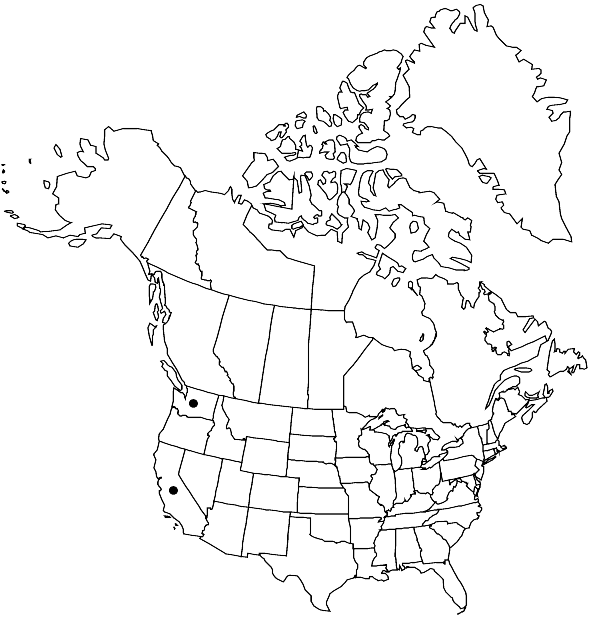Grimmia lesherae
Grimmias, 130, figs. 43a–f. 2003,.
Plants in loose tufts, green. Stems 0.5–1.5 cm, dichotomously branched, central strand absent. Leaves loosely appressed and straight when dry, erectopatent when moist, broadly oblong-lanceolate, tapering to acute apex, 1.5–2 × 0.4–0.6 mm, larger towards stem tips, sharply keeled, margins recurved on both sides, awns absent, occasionally short hyaline points at leaf tips present, costa weak proximally, broad distally, projecting on abaxial side; basal juxtacostal laminal cells rectangular to linear, straight, thin-walled; basal marginal laminal cells rectangular, thin-walled; medial laminal cells short-rectangular with nodulose to sinuose walls, weakly papillose; distal laminal cells 1-stratose, margins 2-stratose. Gemmae absent. Sexual condition dioicous. Seta straight, 2 mm. Capsule occasionally present, exserted, yellowish-brown, oblate, smooth, exothecial cells thin-walled, annulus present, operculum rostrate, peristome teeth orange, deeply split and perforated, papillose. Calyptra cucullate.
Habitat: Damp acidic rock
Elevation: high elevations (2000-3000 m)
Discussion
Of conservation concern.
Grimmia lesherae is apparently endemic to the high mountains along the Pacific Coast of western North America. At present, it is known only from a few damp high elevation sites in Washington and northern California, but suitable habitats exist all along the high coastal mountains and so it may also be expected in Oregon. It is a distinctive species that is unlikely to be confused with others. There are some similarities to G. incurva, but that species has short hair-points, the leaves are linear, the medial cells have nodulose walls, and the seta is arcuate. The combination of keeled leaves with recurved margins, and straight seta is unique in the subgenus. Grimmia lesherae appears to be intermediate between subg. Guembelia and subg. Rhabdogrimmia, calling into question the division of the genus into four subgenera. A peculiar distinguishing character is the left-handed twist of dried-up setae, unique in the genus. K. G. Limpricht ([1885–]1890–1893, vol. 1) incorrectly reported the left-hand twisted, dried up setae as common in Grimmia.
Selected References
None.
